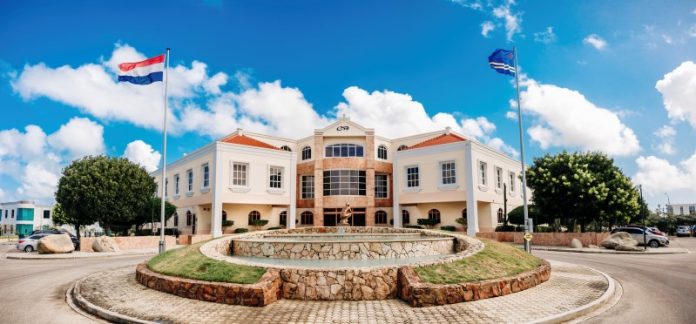During its meeting of January 12, 2022, and after reviewing the most recent economic and monetary data, the Monetary Policy Committee (MPC) of the Centrale Bank van Aruba (CBA) decided to raise the reserve requirement rate[1] from 13.0 percent to 14.0 percent as of February 1, 2022. This decision was primarily based on the elevated level of excess liquidity at the commercial banks.
The following information and analysis were considered in reaching this decision:
International reserves
International reserves (including revaluation differences of gold and foreign exchange holdings), up to and including December 24, 2021, increased by Afl. 757.2 million compared to the end of December 2020. The notable expansion in the international reserves was mostly the result of net inflows of foreign exchange reserves attributed to tourism services and loans from the Government of the Netherlands provided to the Government of Aruba (GoA) for liquidity support. Meanwhile, official reserves increased by Afl. 521.0 million. Consequently, the official and international reserves reached, respectively, Afl. 2,728.9 million and Afl. 3,113.8 as of December 24, 2021
Credit developments
In November 2021, total credit of the commercial banks contracted by Afl. 145.1 million or 3.7 percent to Afl. 3,819.0 million, when compared to the end of 2020. This decline was caused by the categories ‘other’ (-Afl. 83.7 million/-16.3 percent), ‘business loans’ (-Afl. 32.4 million/-2.1 percent), and ‘loans to individuals’ (-Afl. 29.0 million/-1.5 percent). The fall in the category ‘other’ was primarily the result of a lower amount of government bonds held by the local commercial banks. The drop in the category ‘loans to individuals’ was due to a decrease in ‘consumer credit’, while the category ‘business loans’ was for the most part impacted by diminished current account loans.
Inflation
In November 2021, the Consumer Price Index (CPI) rose by 3.1 percent compared to the corresponding month a year earlier. The twelve-month average inflation rate amounted to 0.2 percent in November 2021, 0.5 percentage point higher than the previous month (Graph 2). The rise in the CPI compared to a year earlier was mainly caused by the upward price movements in the components ‘transport’ (1.8 percentage points contribution) and ‘housing’ (0.5 percentage point contribution). The former was related to the trending oil price hike that coincided with a higher gasoline price, while the latter was due to rising prices of maintenance and repair of the dwelling. The higher prices for maintenance and repair of housing dwellings may have been related to the ongoing global supply shortages.
Commercial bank liquidity
The aggregate excess liquidity of commercial banks rose to Afl. 1,295.8 million in November 2021. compared to Afl. 1,107.4 million in December 2020 (Graph 3).
The monthly comparison showed that the aggregated excess liquidity remained unchanged in November 2021 in contrast to October 2021, despite a one percentage point increase in the reserve requirement on the 1st of November 2021. The uptick in the reserve requirement rate was mitigated by a surge in the total liquid funds[2] held by the commercial banks. Consequently, the level of excess liquidity remained unchanged and significantly above pre-pandemic levels.
The ample excess liquidity is partly the result of the continued subdued credit demand at local commercial banks. Furthermore, the wage subsidy and FASE programs of the GoA to cushion the economic effects of the COVID-19 crisis also contributed to the high level of excess liquidity.
Meanwhile, the prudential liquidity ratio of the commercial banks, which measures the percentage of their liquid assets to their total net assets, remained at a comfortable level of 37.9 percent in November 2021, far above the minimum required prudential liquidity ratio of 18.0 percent.q

















